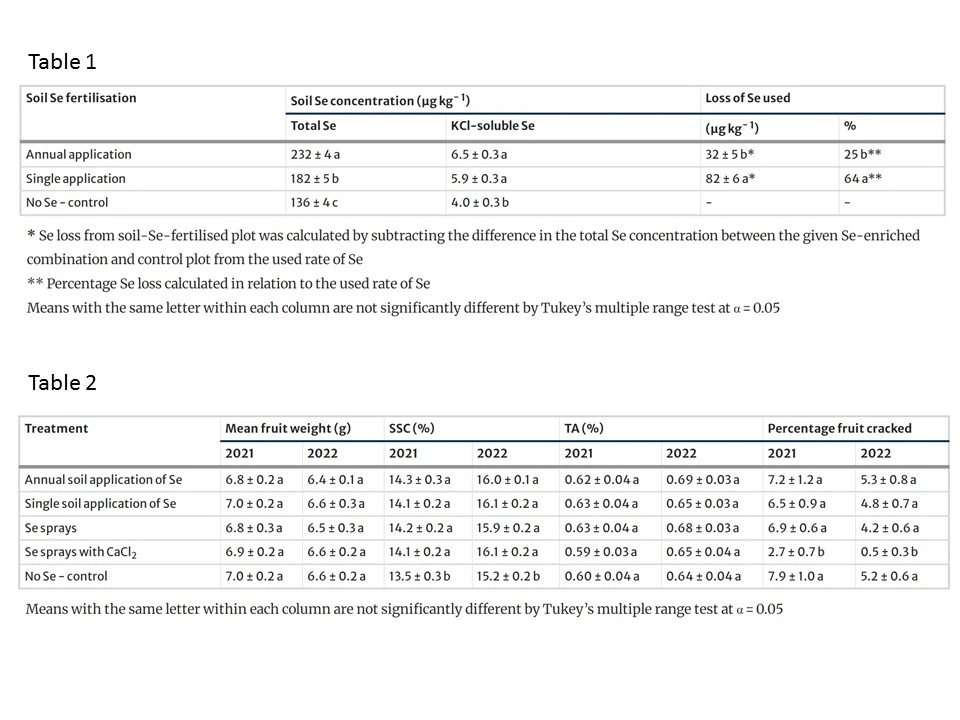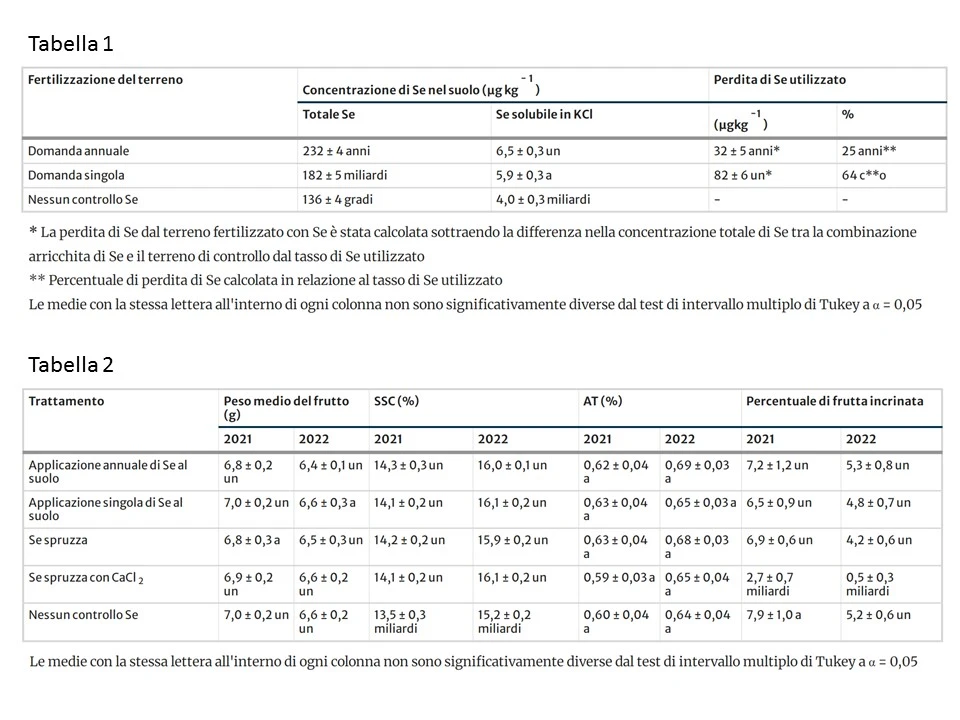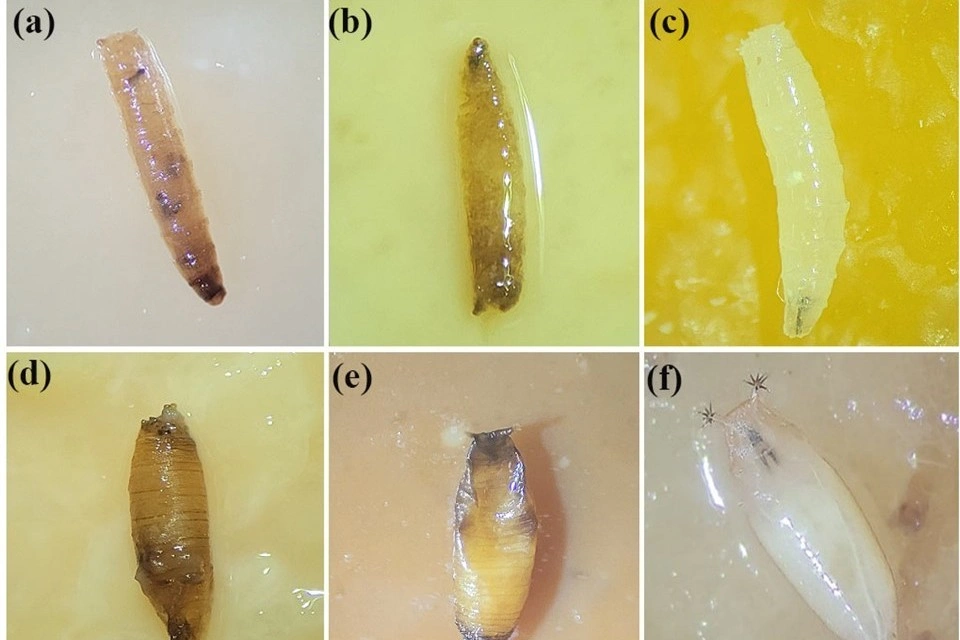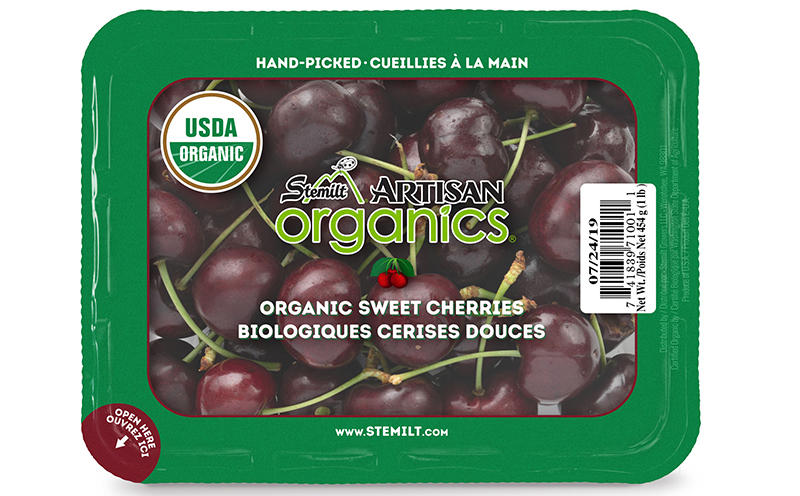Sweet cherries selenium enrichment
Selenium (Se) is an essential micronutrient for human health, providing benefits for the cardiovascular and immune systems as well as cellular metabolism. This element is present in plants, but only in limited quantities. This is mainly due to its low availability in agricultural soils, resulting in reduced plant uptake and low concentrations in fruits for human consumption.
A recent study from Poland evaluated the effectiveness of selenium fertilization on “Burlat” sweet cherry trees, analyzing the impact of different application techniques on tree growth, yield, and fruit quality.
Fertilization strategies and results
 Table 1. Changes in soil selenium status at a depth of 0–30 cm in a ‘Burlat’ sweet cherry orchard after two cropping seasons following soil selenium fertilisation.
Table 1. Changes in soil selenium status at a depth of 0–30 cm in a ‘Burlat’ sweet cherry orchard after two cropping seasons following soil selenium fertilisation.
The two-year study compared two main fertilization strategies: soil application of selenium and pre-harvest foliar sprays. In the first case, selenium was applied as a single dose at the beginning of the season. In the second case, trees received four foliar selenium applications throughout the season, either alone or in combination with calcium chloride (CaCl₂).
The results showed that all fertilization methods increased selenium levels in leaves and fruits, but with significant differences in effectiveness. Trees treated with foliar sprays of Se and CaCl₂ showed the highest increase in selenium concentration in fruits, up to 15 times higher than untreated control samples.
 Table 2. Effect of selenium fertilisation on quality parameters of ‘Burlat’ sweet cherry fruit at harvest.
Table 2. Effect of selenium fertilisation on quality parameters of ‘Burlat’ sweet cherry fruit at harvest.
Effects on tree growth and fruit quality
Despite the increased selenium content in the leaves, none of the adopted techniques significantly influenced tree growth or yield, and at the same time, no treatment caused leaf injuries. However, fruits from Se-treated trees showed an increase in soluble solids concentration (SSC), a key parameter for sweetness and organoleptic quality.
Additionally, only the combined Se and CaCl₂ treatment reduced the percentage of fruits affected by rain-induced cracking, a common issue for “Burlat” variety.
Soil vs. foliar application
Analysis showed that while soil fertilization increased the total selenium concentration in the substrate, it was less effective than foliar applications in transferring the nutrient to the fruits. This result is attributed to the mobility of selenate (the selenium ion used in the study) in the soil, which can be easily leached beyond the root absorption zone, reducing its availability to the plant.
In contrast, foliar applications ensured more direct and efficient absorption.
Nutritional benefits and conclusions
From a nutritional perspective, fleshy fruits like sweet cherries are generally considered a poor source of selenium. Nevertheless, consuming selenium-enriched cherries can help meet the recommended daily intake of this micronutrient more easily.
Based on the results obtained, the study suggests that biofortification with selenium through foliar sprays is an effective strategy to improve the nutritional value of sweet cherries without compromising yield or fruit quality.
In conclusion, the study confirms that pre-harvest foliar applications of selenium are the most effective solution for enriching “Burlat” sweet cherries with this micronutrient, especially in selenium-deficient soils. Furthermore, when selenium treatment is combined with CaCl₂, it offers the additional advantage of increasing soluble solids content and reducing the risk of fruit cracking.
Source: Wójcik, P. Responses of ‘Burlat’ Sweet Cherry Trees to Selenium Fertilisation under Low Soil Selenium Conditions. J Soil Sci Plant Nutr 24, 8343–8352 (2024). https://doi.org/10.1007/s42729-024-02119-8
Images: Fonte: Pawel Wojcik, 2024; SL Fruit Service
Andrea Giovannini
Università di Bologna
Cherry Times - Tutti i diritti riservati














